“One of the most important things is not to get into routine”
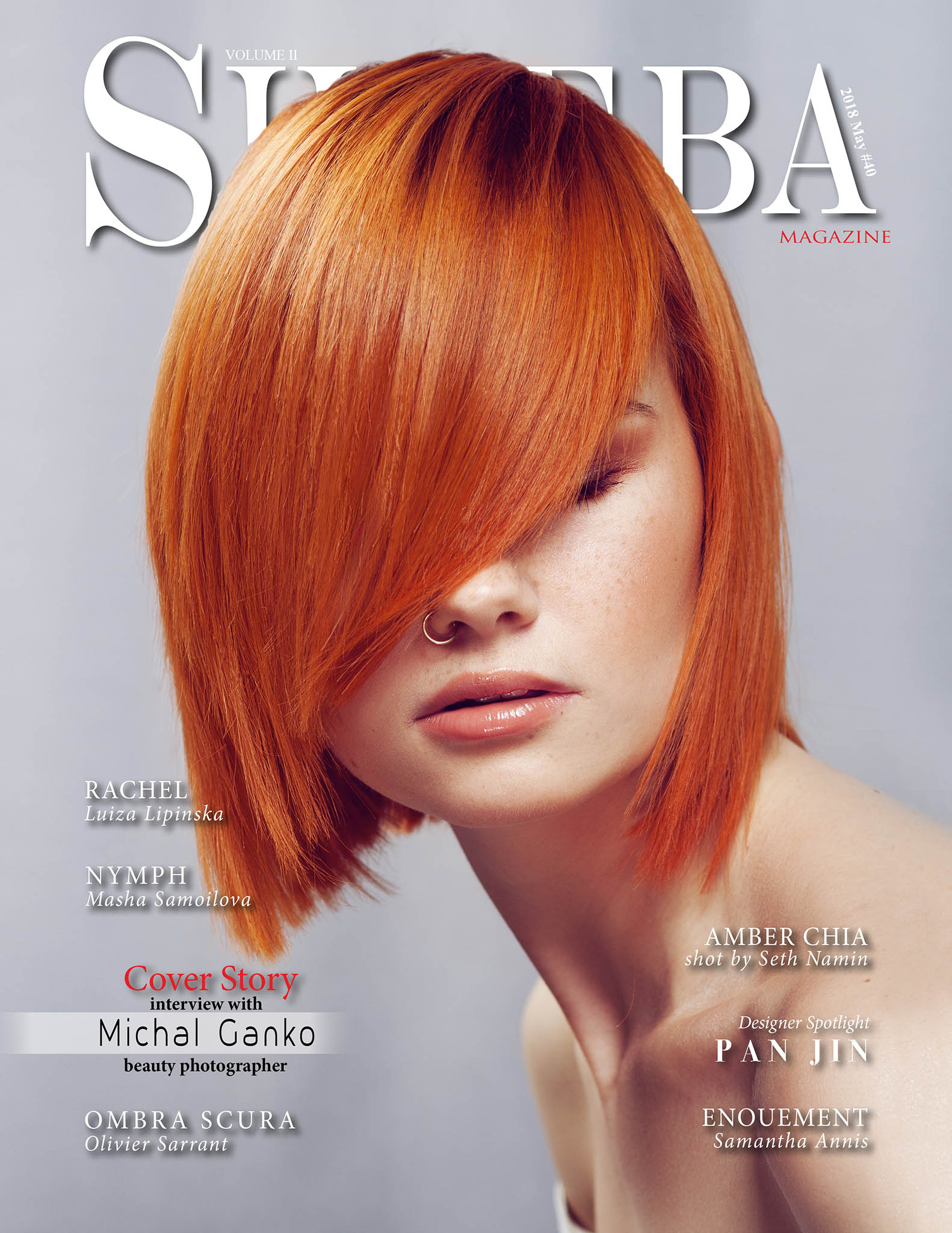
Could you tell us a bit about yourself and how did you get involved with photography? I am a passionate photographer from the area of Warsaw in Poland. I am 34 years old, I began to take interest in photography about 15 years ago but I have built my portfolio in last two years. The interest in photography came from my father who photographed women when he was my age.
I am self-taught. Most of my photos were made using a camera that is worth less than 100$. I was always interested in technical issues and how to use them more than in the visual form. Once I have reached a certain technical level, I started to pay more attention to what is in the picture and how it is presented.
What motivates you to get out of bed in the morning? I get up early in the morning and the main motivator are the challenges that I face every day, apart from being a photographer. I am an IT specialist and a programmer, so every day requires a very good organization from me and it motivates me to wake up in a good mood.
How would you describe your work to someone who has never seen it? Is there any message you would like your photos to convey? With my pictures I try to show perfection. I work with very good make-up artists who care about the perfect make-up and appearance of models on my photo sessions. I want the models to show some emotions and look strong and to make it work well for us. When creating photos I often use colored lights and various other tricks that make the photos look more colorful and visually interesting.
Tell us more about the App you have created. How did this idea come to fruition? What inspired you to create it? Photographing in few years, I often lacked a tool that would allow me to easily select photos from a photo session. This is a very important stage in my workflow.
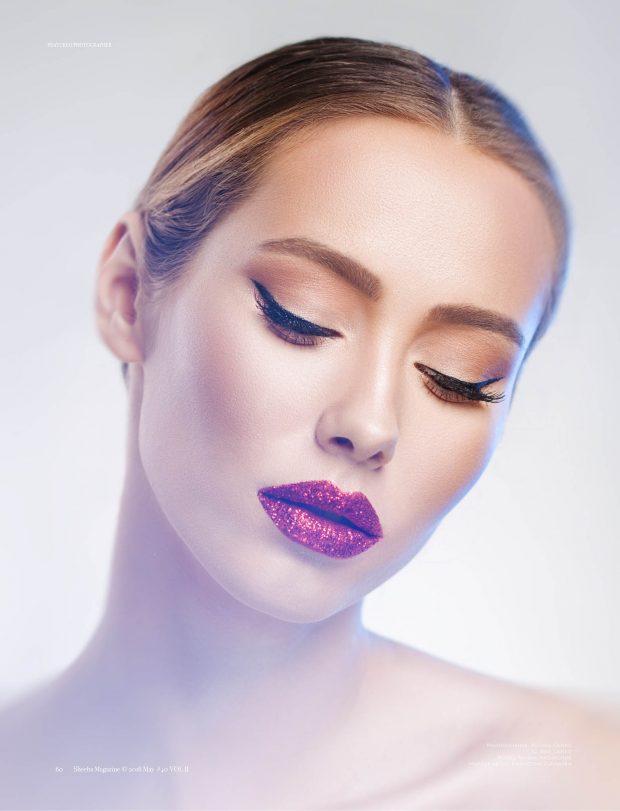 At that time, the idea to create a Photo Selector application was born. As a programmer, I did not have a problem with that and in just a few months this application was created. The application can be purchased and installed on your server where you have your own website. Thanks to it, you can easily upload photos from the session, share with your co-workers (make-up artist, model, stylist) or the client, and they will be able to tag, rate, comment photos.
At that time, the idea to create a Photo Selector application was born. As a programmer, I did not have a problem with that and in just a few months this application was created. The application can be purchased and installed on your server where you have your own website. Thanks to it, you can easily upload photos from the session, share with your co-workers (make-up artist, model, stylist) or the client, and they will be able to tag, rate, comment photos.
Mostly after the session I upload all the photos to the Photo Selector and thanks to this I have access to them from anywhere, for example I can open the photos on the phone and tag my types that will go to the retouch.
This gives me great flexibility and allows me to take a certain distance to the photos because I do not have to sit in one place in front of the computer to choose them.
You can read more about the application here: http://flexphperia/ps/.
Your work is colorful and you bring high productive value to it, how do you keep productive and retain your creative edge? One of the most important things is not to get into routine. Thanks to the fact that I am not only a photographer, I can sometimes rest from it. It makes the next ideas appear in the head in the form of a certain longing for photos. I often get inspired by images that I see, for example colorful billboard lights illuminating a woman who I pass on the street, or photos of other photographers are seen by chance.
Tell us your philosophy when portraying a woman please. I am not a typical portraitist and almost always work with women who have experience in posing, thanks to which I can quickly start the real photo session and there is no barrier between me and the model. I always try to get out of the woman a certain level of tension and femininity, a confident look to the lens. Of course, it always requires work, which starts from the moment you meet the model, through conversation at the session, friendly atmosphere, etc.
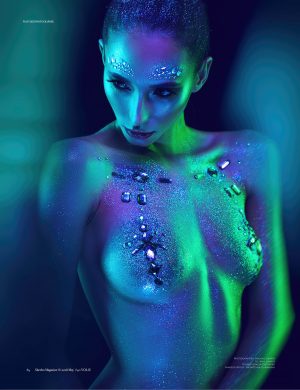 You have mentioned that you make your photographs in home conditions, in a very small space. Can you tell us more about it? Is there anything you have learned from such conditions? Yes, I organized my studio in a flat in a room measuring 3.5 x 3 meters. As I am quite technically talented, I created a lot of things that enable me to work comfortably. For example, I have designed and prepared a ceiling light mount system so that I can work more comfortably and do not use almost any tripods for studio lamps that take up a lot of space.
You have mentioned that you make your photographs in home conditions, in a very small space. Can you tell us more about it? Is there anything you have learned from such conditions? Yes, I organized my studio in a flat in a room measuring 3.5 x 3 meters. As I am quite technically talented, I created a lot of things that enable me to work comfortably. For example, I have designed and prepared a ceiling light mount system so that I can work more comfortably and do not use almost any tripods for studio lamps that take up a lot of space.
When photographing in such a small room, I have learned for sure that you do not have to have a studio to take good pictures of beauty or portraits. You can also achieve good results by completing the low-end equipment yourself.
Could you describe a typical set-up for one of your shots? What is your favorite light source, and why do you choose it? The typical lighting that is used is of course the flash light. I often use an octa of about 100cm diameter, and colored lights set behind the model, in addition to the lens I often set a wine glass which gives an interesting blur effect and light blinks.
My favorite light source is a large beauty dish. Due to the fact that it is difficult to get or are very expensive, I modified my octa by installing a small reflector in it that I made from the lid from the kitchen pot (smiling).
What from your point of view makes the shoot successful? The team with whom I work together and the plan are very important to me. Before each session, I always set the exact plan with the model and make-up artist, we discuss the make-up and the possible styling. Good organization and commitment of all people is the key to success.
Describe please a day at a shoot, what happens and what is the trick to capturing a great shot? Due to the fact that I photograph in my apartment, I do not have to prepare myself for the session. After the arrival of the model and make-up artist, I always sign with model written permission allowing me to publish their image, and then the make-up artist starts to prepare the model.
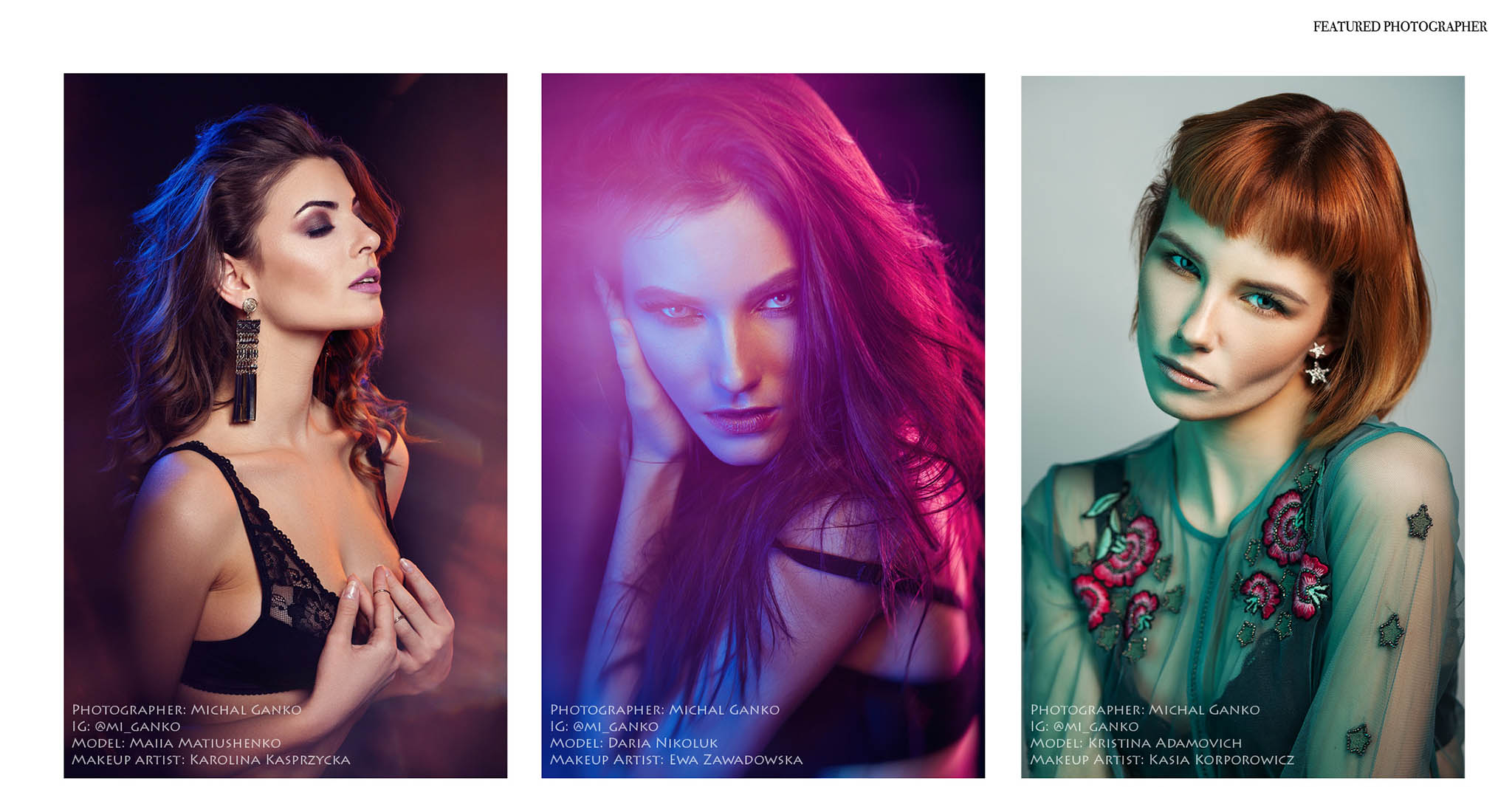
Later, we take some photos and short breaks to change the lighting setup. Probably the most common element that causes better and better pictures is the passing time. The longer we photograph, the better pictures come out to us, usually at the end of the photo shoot.
What are some of pieces of equipment or props that you cannot live without? I think they are wine glasses (smiling). I set them in front of the lens and they give me a nice blur effect in the picture and the light rays.
What do you look for when selecting a model? Do you have any physical aesthetic preferences in the models you shoot? Most often it is expressiveness. The more expressive the face is, the better. The mimicry is also very important and how the model works in front of the lens. One of the most important elements are the eyes.
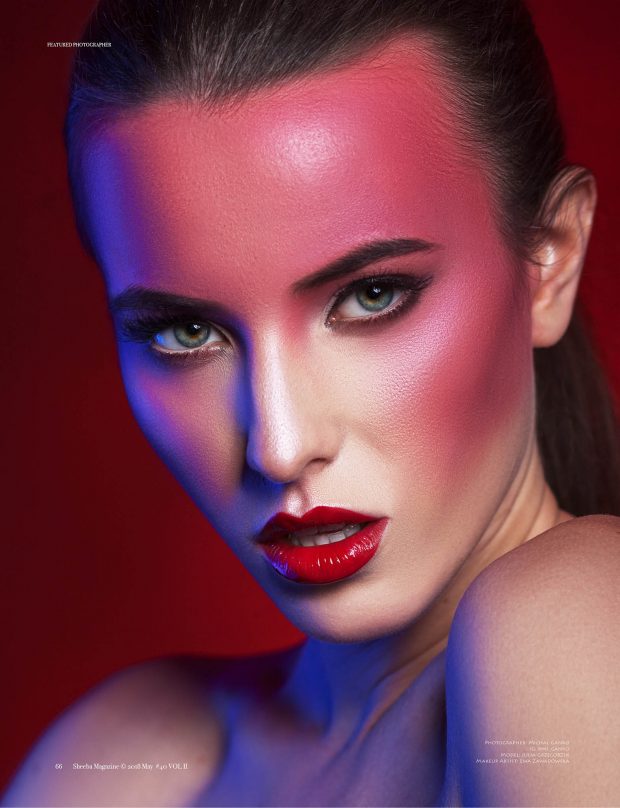 What is the key to getting the best out of someone? Cooperation, commitment, good atmosphere, time spent in front of the lens.
What is the key to getting the best out of someone? Cooperation, commitment, good atmosphere, time spent in front of the lens.
In your opinion, what makes a great portrait shot? It is the expression of the model, light, frame, colors.
What do you find the most challenging about portrait photography? The biggest challenge for me is capturing this “something” in the picture, the moment when the model looks curiously at the lens with emotion and expression.
What do you look for in a creative team? What key skills are you looking for to ensure you are picking the best artists to work with? In the case of a model, the most important for me is her experience, the ability to pose an interesting facial expression, expressiveness. Working with make-up artists, it is very important for me that these people are quite organized because it is me and the make-up artist who must take care of the good looks and well-being of the model.
In addition to being sharp and well lit, your photos are beautifully edited. What is your retouching/production philosophy? Over the years I have been trying to refine my retouch technique. Now I am using proven solutions and I do not spend too much time on each photo. I try to bring the look of the photo to perfection but at the same time keeping some limits so that the pictures do not look artificial.
If you had unlimited resources, what would you shoot and what genres you would like to experiment with more? In fact, I tried many things. I would like to try is working with a super professional expensive studio equipment, to see what is the comfort of working on it.
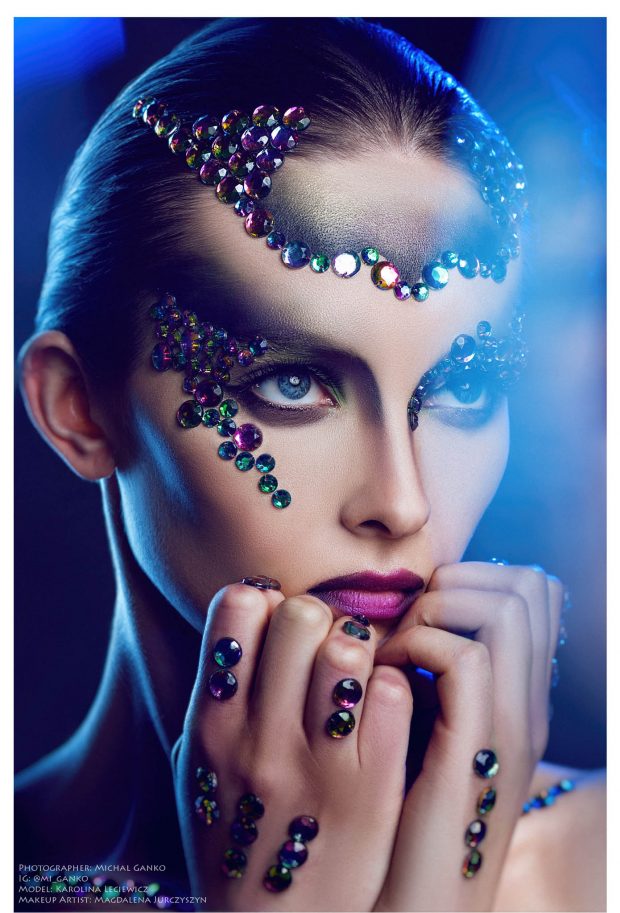 What would be some tips you would give to a beginning photographer? The equipment is not important, at least at the beginning. If you can learn on your own, there are a lot of tips on the internet that will be useful to you. If you prefer that someone show it to you, sign up for a workshop for a photographer whose work you like.
What would be some tips you would give to a beginning photographer? The equipment is not important, at least at the beginning. If you can learn on your own, there are a lot of tips on the internet that will be useful to you. If you prefer that someone show it to you, sign up for a workshop for a photographer whose work you like.
Is there anything you would like to do in the future, someone you would like to work with or something you would like to accomplish? For sure I would like to work with better agency models in the future. In the future, I also plan to photograph lingerie and nudity a little more.
Where can our readers keep up with your work? My full portfolio can be found at: http://mganko.pl. My fanpage: www.facebook.com/mgankophotography. Instagram: www.instagram.com/mi_ganko/. Photo Selector app: http://flexphperia.net/ps.
What do you love most about being a photographer? The ability to create something pleasing to the eye from what you see.
If you could say something to everyone on the planet, what would it be? Tomorrow is now. Do not hesitate too much with what you care about.
Please tell one surprising (interesting) fact about yourself. I can do many things at once. Often, for example, taking pictures, despite the fact that I am fully committed, I devise some algorithm that I must create as a programmer, one activity never exhausts my “computing power”.
Thank you, Michal.
Published in 2018 May VOL II: BUY NOW

